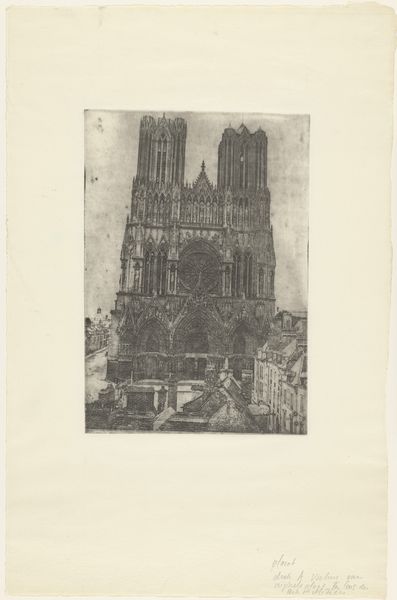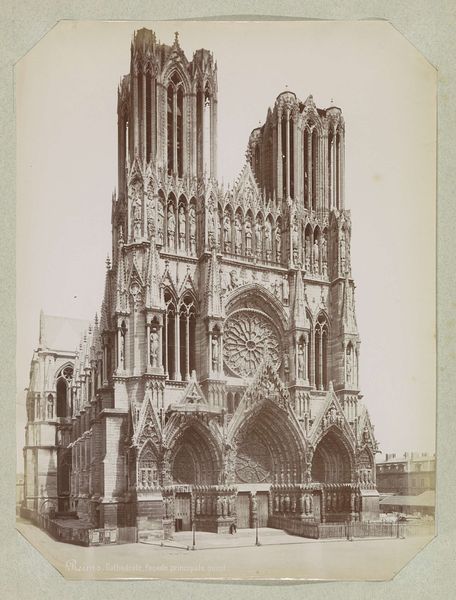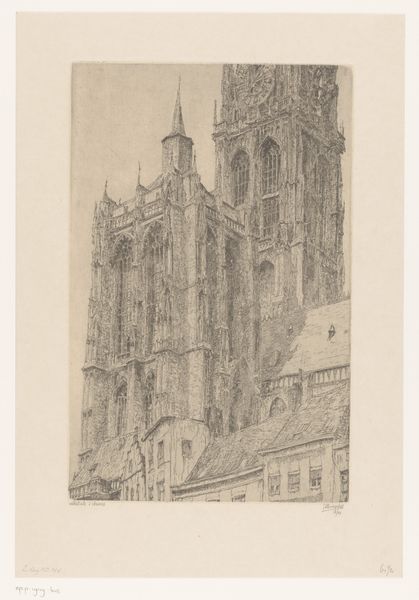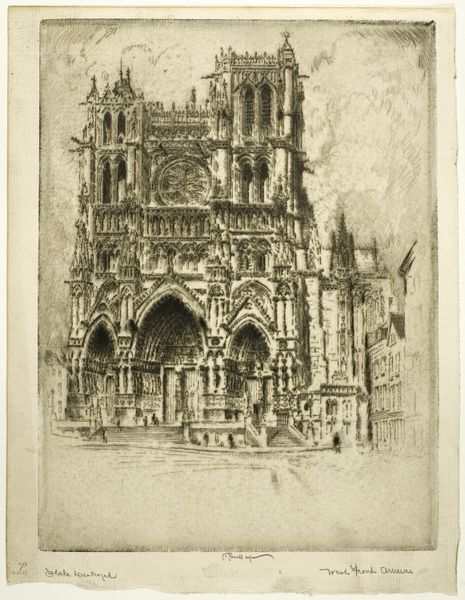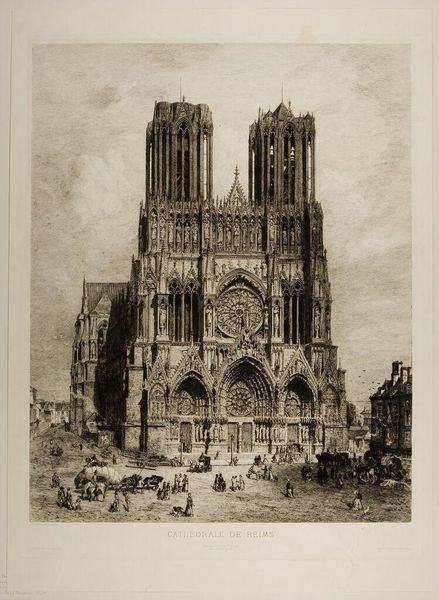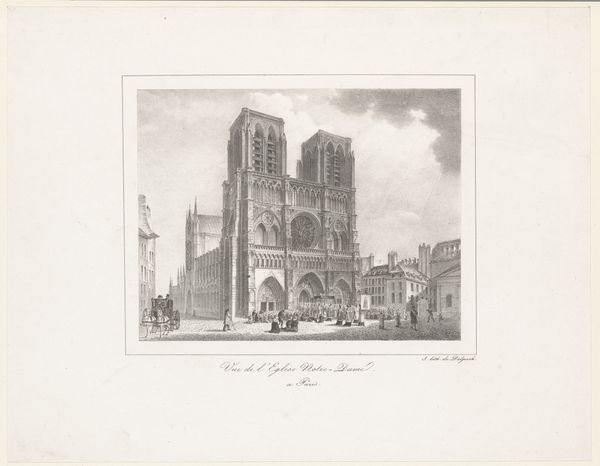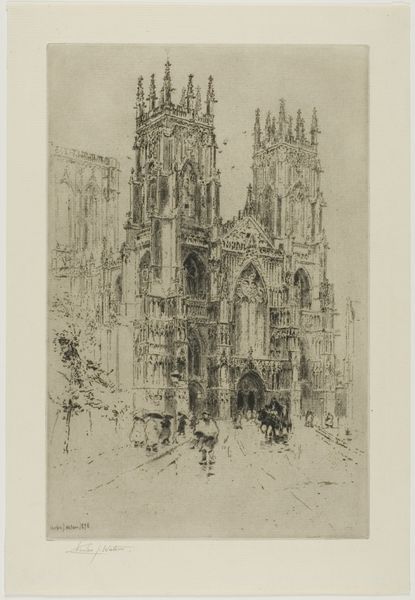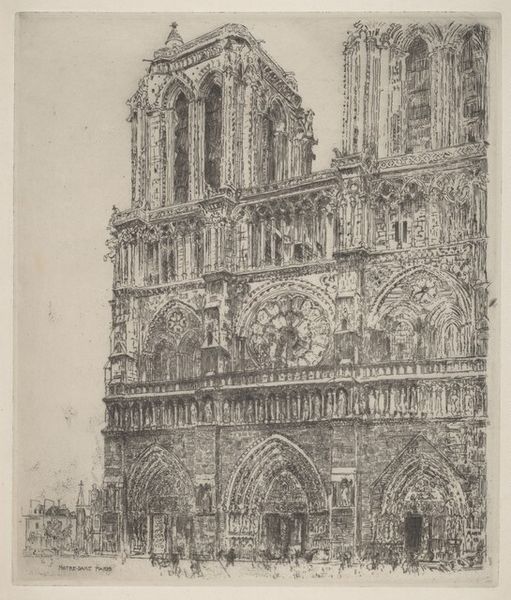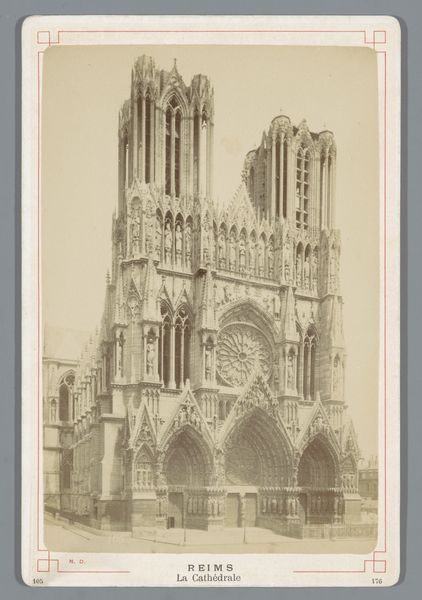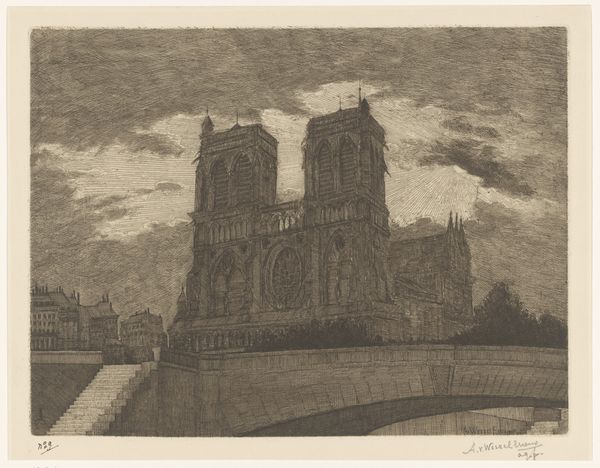
Dimensions: 359 × 274 mm (image); 394 × 301 mm (plate); 481 × 356 mm (sheet)
Copyright: Public Domain
Curator: What an incredible rendering of the Rheims Cathedral. This print, dating from 1911, is the work of Auguste-Louis Lepère, rendered in etching on paper. It's held right here at the Art Institute of Chicago. Editor: It’s overwhelmingly intricate, a spiderweb of lines creating this imposing structure. The detail is impressive, but it almost feels like a monument teetering on the edge of dissolution. Curator: The etching really lends itself to that feeling, doesn't it? Lepère clearly wanted to convey not just the architectural grandeur but something about the weight of history embodied in the cathedral itself. He zeroes in on Gothic architecture's propensity for verticality, speaking to that human aspiration toward transcendence. The façade, bustling with figures... Editor: All these little people down there, they’re ant-like. It does make me think about the immense labor and materials required to build such a massive thing, and who gets remembered versus who is forgotten in that process. It begs the question: how were the lives of ordinary people impacted by its construction? Were they in awe, or did it primarily serve as a symbol of oppressive power? Curator: It could easily be both. Cathedrals are complex symbols. Think of the stained glass, each panel depicting biblical narratives intended to be ‘read’ by a largely illiterate populace. The sculptures themselves are didactic tools, aren't they? Visual sermons meant to reinforce a specific worldview. Editor: I’m especially drawn to the etching technique itself. How Lepère’s careful manipulation of acid and metal plate mirrors the meticulous carving of the stone. This is the product of incredible skill – both that of the original masons and of Lepère. Each line a trace of someone’s effort and intention. I am curious what metal was used, the conditions in which it was worked. Curator: A worthwhile line of inquiry, indeed. I look at the print now and wonder how the image resonates given the damage the cathedral suffered just a few years later during the First World War. It gives Lepère’s depiction a sense of fragile permanence. Editor: It certainly prompts reflection. Art can illuminate power dynamics embedded in these enormous building projects.
Comments
No comments
Be the first to comment and join the conversation on the ultimate creative platform.
